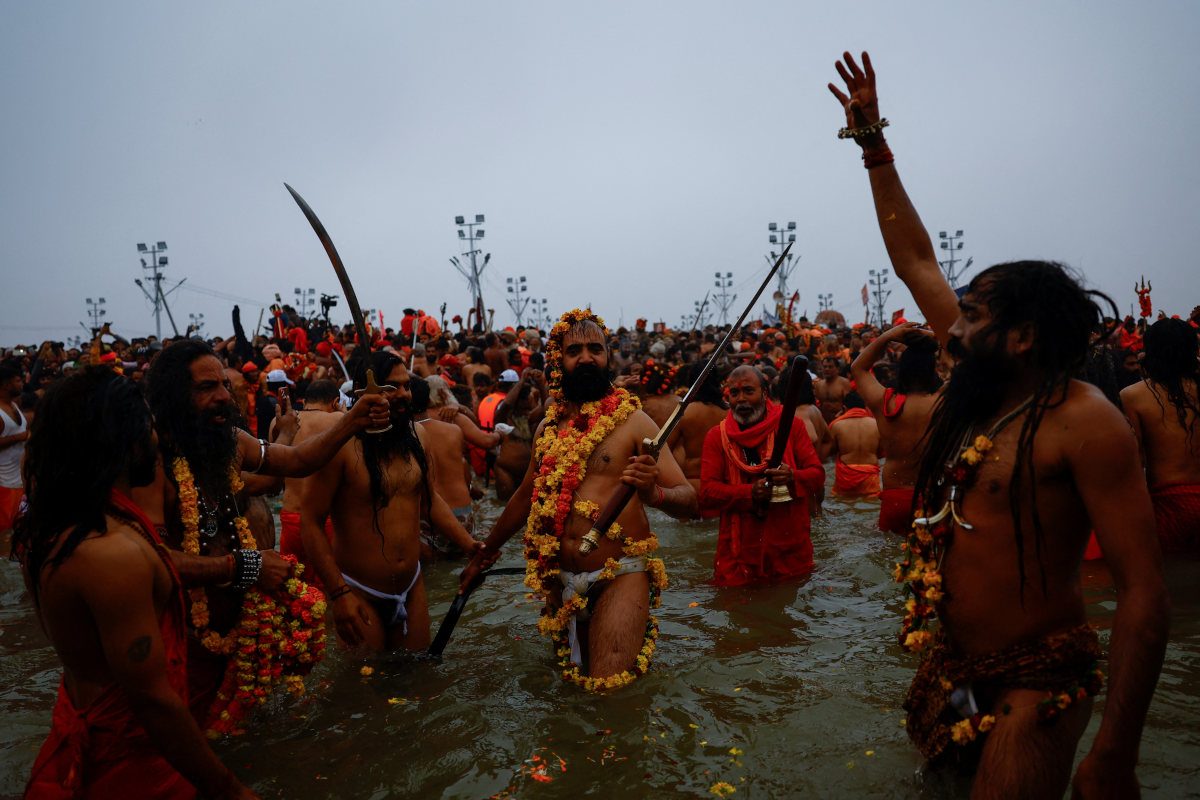SUMMARY
This is AI generated summarization, which may have errors. For context, always refer to the full article.

PRAYAGRAJ, India – Scores of naked Hindu ascetics smeared in holy ash charged into the water of holy rivers in northern India on Tuesday, dreadlocks flying, during the first ‘royal bath’ of the Maha Kumbh Mela, or Great Pitcher Festival.
The ‘royal bath’ is a key part of the event, held every 12 years in the city of Prayagraj in Uttar Pradesh, significant because Hindus believe it confers salvation from the cycle of birth and death, in addition to absolution of sins.
The dip by the ascetics, who wore only holy beads, though some wielded tridents, spears, or maces, signals the start of the ritual, watched by thousands of devotees.
“I was a bit intimidated by the crowd at first but … was able to take a dip within two hours of arriving in the city,” said Pawan Yadav, who witnessed he event after travelling 200 kilometers (124 miles) from his home in Lucknow, the state capital.
Earlier, to chants and the beat of drums, the ascetics had moved in procession towards the water, standing atop decorated trucks, riding horses, or walking.
Nearly 15 million people had taken a ritual dip at the confluence of the rivers Ganga, Yamuna, and the mythical, invisible Saraswati when the festival, expected to attract more than 400 million people, began on Monday.
The Kumbh originates in a Hindu belief that four drops of the nectar of immortality fell to earth, one in Prayagraj, during a battle between the god Vishnu, known as the Preserver, and demons to possess a golden pitcher holding the elixir.
Every 12 years, the festival is described as ‘maha’ or great, as the timing is considered to render it more auspicious, drawing bigger crowds.
More than 150,000 tents have been set up to accommodate visitors, 450,000 new electric connections made, and 40,000 police officers deployed to ensure the event – touted to be the world’s largest gathering of humanity – goes off smoothly.
The budget for the festival is estimated to be $800 million and analysts expect it to boost economic growth by an estimated $30 billion to $35 billion. – Rappler.com
Add a comment
How does this make you feel?




There are no comments yet. Add your comment to start the conversation.